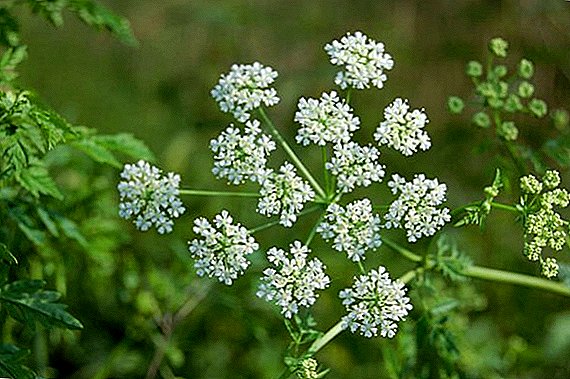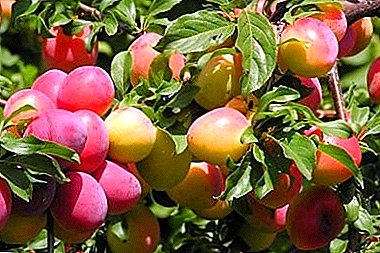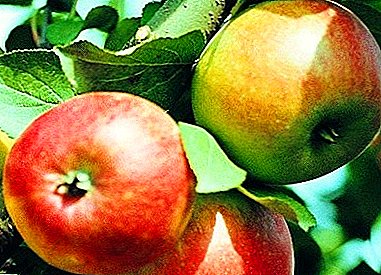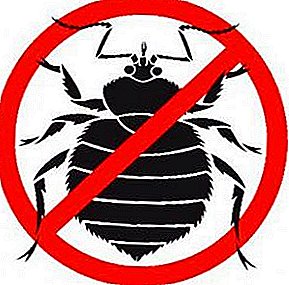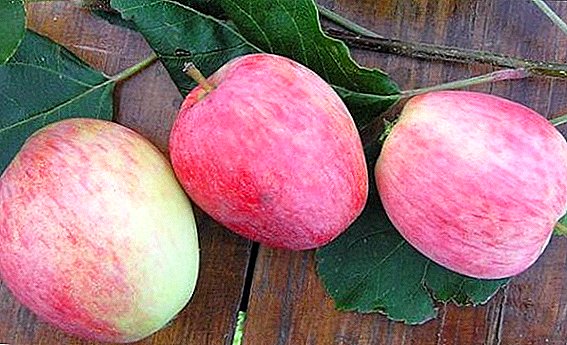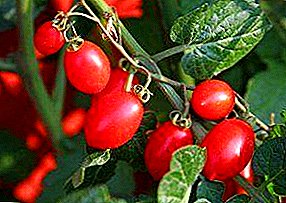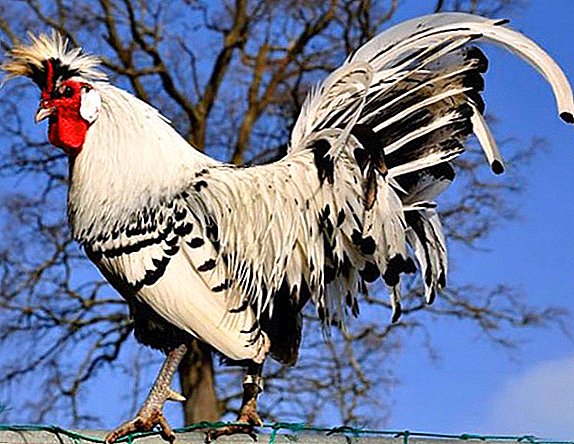 In this article we want to talk about an unusual breed of chickens, whose appearance can surprise even the most experienced breeders of rare breeds of domestic birds. In addition to a memorable appearance, Appenzeller chickens have excellent immunity and are completely unpretentious in food and care. Read about the peculiarities of the breed and the rules of its care.
In this article we want to talk about an unusual breed of chickens, whose appearance can surprise even the most experienced breeders of rare breeds of domestic birds. In addition to a memorable appearance, Appenzeller chickens have excellent immunity and are completely unpretentious in food and care. Read about the peculiarities of the breed and the rules of its care.
Origin
Initially, the Uppenzellers were bred in Switzerland solely to decorate the yard, but local farmers were pleasantly surprised by the performance indicators of a new variety of chickens. The exact age of the Appenzeller breed is not known, but scientists have found that it is at least 300 years old.
The breed of chickens such as "Lakenfelder", "Sumatra", "Gudan", "Chinese Silk", "Pavlovskaya Golden", "Hamburg", "Bielefelder", "Barnevelder", "Araukana", "Brekel" also differ in their beautiful appearance. silver "," Legbar "," Maran "," Bentamka "," Paduan "," Forverk. "
External characteristics
Chickens of this breed are harmoniously folded, while they are small in size. One of the features of the exterior - the crest on the head. Let's find out how females and males of the Appenzeller breed look like. 
Chickens
Chickens have the following external characteristics:
- the body is compact, rounded;
- the neck is of medium length, strongly raised;
- chest slightly convex forward;
- the head is small, in its upper part there is a lush crest with a horn-like and erect crest;
- eyes brown, beak short but strong, with pronounced nostrils;
- there are no feathers on the face; medium sized earrings are located under the neat ears;
- the wings are well developed and tight to the body;
- plumage is thick, tail feathers are long and straight;
- The most common color of the laying hen is white with black patches, and black, silver-black, golden and spotty colors are also allowed.

Familiarize yourself with the best representatives of egg, meat, meat-egg, fighting and decorative breeds.
Roosters
The males have the following external data:
- somewhat larger than the hens, their back and chest are wide, the neck is small but strong;
- neck, back and tail form a smooth bend, which gives the body a harmonious look;
- the belly has a more convex shape than in chickens;
- the head is of medium size, the skin on the face is red, without plumage;
- beak massive, white and blue, nostrils are clearly visible;
- the top of the head is covered with thick feathers, forming a pointed tuft, ridge horn-shaped and upright;
- rooster wings are powerful and well developed;
- thick plumage fits tightly the body of a rooster, especially long feathers grow on the neck and lower back;
- tail magnificent - kositsy long and slightly bent down.

Nature of chickens
Many connoisseurs of this rare breed say that Appenzellers have a very friendly character, so they are ideal for sharing with other species of birds.
Let's find out what else character traits prevail in Swiss layers:
- curiosity;
- activity;
- lack of aggression towards the neighbors in the house.
Important! The curiosity of the Appenzellers can harm their health. Chickens can easily jump on the road or climb on someone else's site. Equipping the territory for their walking, pay special attention to the quality and height of the fence.

Productivity
We have prepared for you a table in which the main indicators of the productivity of the Appenzeller chicken breed are indicated:
| Chicken weight, g | How many eggs gives per year, pcs. | Egg weight, g |
| 1800-2300 | 120-150 | 55-75 |
Laying birds of this breed are considered mid-early ripening birds, and their first egg lay can be made at the age of 5.5 months.
Content Features
The maintenance of the Swiss layers does not demand special skills. Even a beginning farmer can cope with growing Appenzellera - so easy to care for them.
Diet
The hens of the Appenzeller breed are absolutely omnivorous. Their daily diet is practically no different from the diet of any other chickens.  The only thing you should pay attention to is changing the feeding rules in the winter and summer periods.
The only thing you should pay attention to is changing the feeding rules in the winter and summer periods.
- In the cold season feed the birds at least three times a day, while using a slightly heated feed. Be sure to add to the food vitamin and mineral supplements that will help fill the lack of nutrients in the body Appenzellerov.
It will be useful for you to read about what vitamins chicken hens need for egg production, as well as how to give the chickens wheat germ, bran and meat and bone meal.
From natural products will be useful supplements chopped root vegetables and meat waste. Brews based on boiled cereals prolong the feeling of fullness in the hens. The water in the feeder should be changed regularly, preferably slightly warmed before serving. - In the summer it will be much easier to feed the birds - just release the hens on the lawn, and they will take care of themselves. Fresh green grass and insects will fill the hens with useful elements no worse than mash.
Did you know? Swiss layers are excellent hens, which with visible pleasure stroll with their chickens on the lawn, and can easily incubate the eggs of other birds.

Care
We have prepared for you five basic rules that will help your birds to have a healthy appearance and not to reduce the rate of productivity during the year:
- Maintain a dry climate in the house. Increasing the level of moisture in the air will inevitably lead to outbreaks of disease in your chicken family.
- Good ventilation. Humid and still air in a chicken coop is ideal conditions for the reproduction of harmful bacteria and microorganisms that can cause irreparable damage to the health of Appenzellers.
- Regular disinfection of the room.
- Regular inspection of birds by a veterinarian, as well as adherence to the schedule of vaccinations for the formation of strong immunity against many dangerous diseases for the Uppeller.
- A varied and balanced diet.
Read more about how to prepare feed for chickens and for adult birds with your own hands.
Dry feed, homemade mixers and vitamin and mineral complexes can saturate the birds with all the necessary nutrients for their full development. Also do not forget about clean water in the drinker.

Moult
One of the features of the Swiss breed of chickens is that they lack juvenile molt. But this does not mean that they do not have any plumage changes at all. Every year at the end of autumn the old feathers gradually fall out, and in their place new, brighter and more magnificent ones grow.
This period lasts a month and a half, and the bird may experience a decrease in activity and a break in the laying of eggs. Experienced breeders recommend to improve the quality of food of Appenzeler during molting and add vitamins and trace elements to their daily diet, so that new feathers grow back before the onset of cold weather.
Important!During the summer period, make sure that the food in the trough is not more than three hours. High temperatures can cause pathogens to multiply. The water in the drinker should be updated every two hours.

Advantages and disadvantages
Let's highlight the main advantages of Appenzellers:
- unusual and original appearance;
- calm and friendly disposition;
- good productivity indicators;
- well-developed egg incubation instinct;
- strong immune system.
It will be useful for you to read about what to do if chickens are badly rushing and pecking eggs, why there is blood in chicken eggs, whether a rooster is needed for the chickens to carry eggs when hens begin to rush.
There are practically no flaws in Appenzellera, the main disadvantages include:
- high cost of young stock due to rarity of the breed;
- reduction in egg production in the third year of laying hens.

Did you know? Chickens are one of the few birds that are susceptible to hypnosis. In order for the bird to fall into a trance, you need to press its head to the floor and draw a straight line with a chalk from the beak. The layer will lie motionless and stare at the line you have drawn.
Thus, the crested hens of Appenzeller, despite their rarity, are unpretentious in content and do not require special skills for their cultivation and reproduction. If desired, even an inexperienced farmer will cope with the cultivation of this breed of birds.
Reviews from the network



